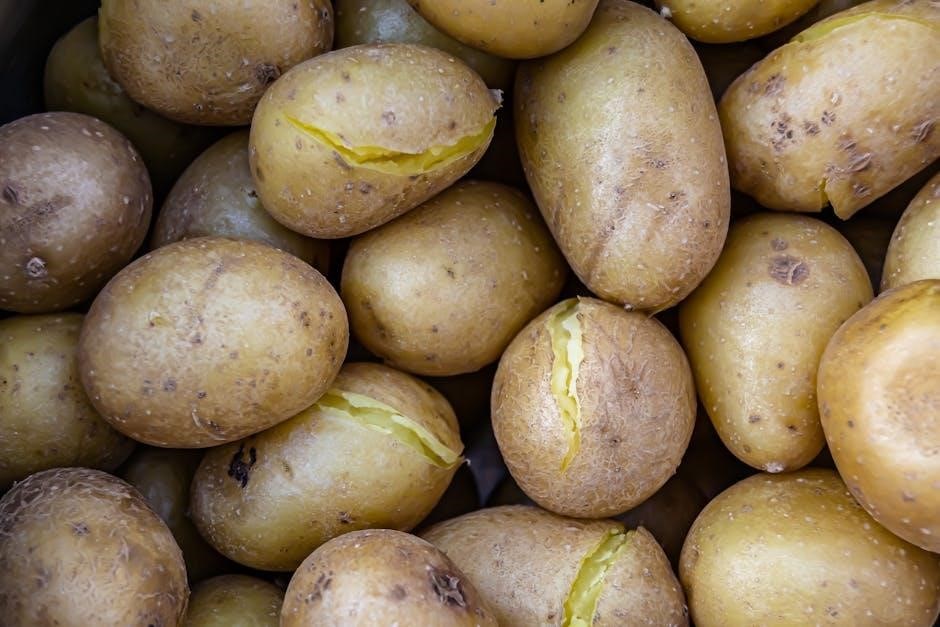Modernist Cuisine: The Art and Science of Cooking is a groundbreaking‚ six-volume cookbook that revolutionizes culinary techniques. Authored by Nathan Myhrvold‚ Chris Young‚ and Maxime Bilet‚ it combines science and creativity‚ offering insights into innovative cooking methods.
The book’s digital version‚ including a PDF‚ has made modernist techniques more accessible‚ allowing home cooks and professionals alike to explore sous vide‚ spherification‚ and other advanced practices with ease.
1.1 Definition and Overview
Modernist Cuisine: The Art and Science of Cooking is a revolutionary culinary approach that blends scientific principles with creative cooking techniques. It is defined by its use of advanced methods like sous vide‚ spherification‚ and foamification‚ which transform traditional ingredients into innovative dishes. This comprehensive guide‚ available in a detailed PDF version‚ empowers both professional chefs and home cooks to explore the intersection of science and flavor. Its accessible format and groundbreaking insights have made it a cornerstone of modern culinary innovation.
1.2 Historical Context and Evolution
Modernist Cuisine emerged from a culinary revolution that began in the late 20th century‚ drawing inspiration from pioneering chefs like Ferran Adrià. It bridges traditional techniques with scientific advancements‚ transforming cooking into a precise‚ experimental art form. The PDF version of Modernist Cuisine has democratized access to these innovative methods‚ making them available to a global audience. This evolution marks a significant shift in culinary history‚ solidifying its place as a seminal work that continues to inspire chefs and home cooks alike‚ pushing the boundaries of gastronomic creativity.
1.3 Key Principles and Philosophies
Modernist Cuisine revolves around the integration of science‚ creativity‚ and tradition. It emphasizes precision‚ experimentation‚ and understanding the chemical and physical transformations in cooking. Techniques like sous vide‚ spherification‚ and foamification showcase the fusion of art and science. The philosophy encourages innovation while respecting culinary heritage. The PDF version of Modernist Cuisine democratizes these principles‚ making them accessible to both professionals and home cooks‚ and fostering a deeper appreciation for the craft of cooking.
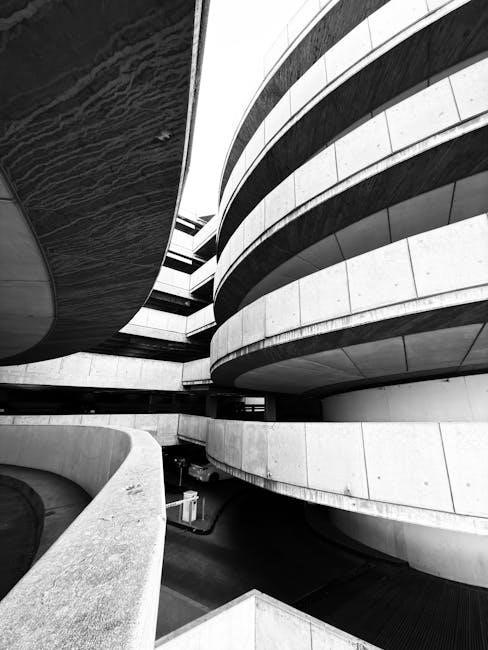
The Authors and Their Contributions
Nathan Myhrvold‚ Chris Young‚ and Maxime Bilet pioneered Modernist Cuisine‚ blending science and culinary art. Their work‚ including the PDF version‚ has revolutionized cooking techniques globally.
2.1 Nathan Myhrvold: The Visionary Behind Modernist Cuisine
Nathan Myhrvold‚ a visionary scientist and chef‚ pioneered Modernist Cuisine‚ transforming culinary practices. His groundbreaking work combines scientific principles with culinary art‚ making complex techniques accessible. As the primary author of the six-volume set‚ Myhrvold’s innovative approach has revolutionized cooking. His background in physics and photography adds depth to the book’s visual and technical excellence. Myhrvold’s contributions have empowered both professionals and home cooks‚ democratizing modernist methods through detailed explanations and stunning visuals‚ including the widely available PDF version.
2.2 Chris Young and Maxime Bilet: Co-Authors and Innovators
Chris Young and Maxime Bilet‚ alongside Nathan Myhrvold‚ co-authored the revolutionary Modernist Cuisine. Young‚ a chemist turned chef‚ brought scientific rigor‚ while Bilet‚ a culinary artist‚ infused creativity. Their collaboration bridged the gap between science and cooking‚ creating a comprehensive guide. The PDF version of their work has made these innovative techniques accessible to home cooks‚ showcasing their dedication to culinary innovation and education. Their contributions have redefined modern cooking‚ inspiring a new generation of chefs and enthusiasts alike.
2.3 The Collaborative Effort Behind the Book
The creation of Modernist Cuisine was a collaborative effort involving a team of scientists‚ chefs‚ and experts. Nathan Myhrvold‚ Chris Young‚ and Maxime Bilet led the project‚ blending their expertise in science‚ culinary arts‚ and innovation. The team conducted extensive research‚ tested techniques‚ and refined recipes. The PDF version of the book reflects this collaboration‚ offering detailed insights and accessible methods for both professionals and home cooks. This collective effort established Modernist Cuisine as a seminal work‚ revolutionizing the culinary world.
The Structure of Modernist Cuisine
Modernist Cuisine is a six-volume‚ 2438-page set weighing 18 kg‚ offering a comprehensive exploration of culinary science and techniques. The PDF version enhances accessibility for home cooks and professionals alike.
3.1 The Six-Volume Set: An Overview
The six-volume set of Modernist Cuisine spans 2438 pages‚ providing an extensive exploration of culinary science. It covers history‚ techniques‚ ingredients‚ and plated recipes‚ making it a comprehensive resource. The PDF version ensures accessibility‚ allowing chefs and home cooks to explore modernist methods like sous vide and spherification. This set is a foundational guide for understanding and applying innovative cooking practices‚ bridging the gap between professional kitchens and home environments with detailed insights and visual aids.
3.2 Volume 1: History and Fundamentals
Volume 1 of Modernist Cuisine delves into the historical evolution of culinary practices‚ tracing the roots of modernist cooking. It explores foundational scientific principles‚ such as the chemistry of ingredients and cooking processes. This volume also examines the contributions of pioneering chefs like Ferran Adrià and Heston Blumenthal. By connecting past innovations to contemporary techniques‚ Volume 1 establishes a framework for understanding the transformative power of modernist cuisine‚ making it essential for both professionals and home cooks seeking to master advanced culinary methods.
3.3 Volume 2: Techniques and Equipment
Volume 2 of Modernist Cuisine focuses on cutting-edge techniques and the tools that make them possible; It explores methods like sous vide‚ foamification‚ and spherification‚ detailing how these processes transform ingredients. The volume also covers essential equipment‚ from immersion circulators to homogenizers‚ explaining their roles in achieving precise results. By bridging the gap between theory and practice‚ Volume 2 empowers chefs and home cooks to experiment with modernist methods confidently‚ ensuring a deep understanding of the techniques and tools that define contemporary culinary innovation.
3.4 Volume 3: Animals and Plants
Volume 3 of Modernist Cuisine delves into the culinary exploration of animal and plant ingredients. It examines how modernist techniques transform meats‚ poultry‚ seafood‚ and plant-based foods. Detailed sections cover everything from sous vide cooking for tender meats to innovative uses of plant-derived ingredients. The volume also explores the science behind cooking animals and plants‚ offering insights into achieving optimal textures and flavors. By focusing on ingredient-specific methods‚ Volume 3 provides a comprehensive guide to elevating both animal and plant-based dishes to new culinary heights.
3.5 Volume 4: Ingredients and Preparation
Volume 4 of Modernist Cuisine focuses on the science and art of ingredient preparation. It explores how modernist techniques like emulsification‚ gelification‚ and spherification transform ingredients into innovative dishes. This section delves into the chemistry behind these methods‚ providing detailed recipes and insights. By understanding the properties of ingredients‚ chefs can create unique textures and flavors. The volume serves as a comprehensive guide‚ empowering both professionals and home cooks to experiment with cutting-edge culinary practices and push the boundaries of traditional cooking.
3.6 Volume 5: Plated Dish Recipes
Volume 5 showcases a diverse collection of plated dish recipes‚ blending artistry and science. It features innovative creations that highlight modernist techniques‚ offering a visual and culinary journey. Each recipe is meticulously detailed‚ providing chefs with inspiration and guidance. This volume emphasizes presentation‚ transforming dishes into edible masterpieces. By focusing on creativity and precision‚ Volume 5 serves as a cornerstone for modernist cuisine‚ inspiring chefs to explore new frontiers in gastronomy. The recipes are both visually stunning and flavorful‚ exemplifying the fusion of art and science in cooking.
3.7 Volume 6: Plated Dish Recipes (Continued)
Volume 6 continues the culinary journey‚ offering an extensive array of plated dish recipes that push the boundaries of modernist cuisine. Building on the foundation of Volume 5‚ this section delves deeper into intricate preparations‚ showcasing advanced techniques like spherification and foamification. The recipes are both visually stunning and scientifically precise‚ catering to adventurous chefs. With its detailed instructions and creative flair‚ Volume 6 serves as a comprehensive guide for crafting modernist masterpieces. Its digital availability in PDF format ensures accessibility for home cooks and professionals alike‚ further democratizing modernist cooking.

Key Concepts in Modernist Cuisine
Modernist Cuisine emphasizes techniques like sous vide‚ foamification‚ spherification‚ gelification‚ and emulsification‚ transforming ingredients into unique textures and flavors while blending science and creativity in cooking.
4.1 Sous Vide: A Revolutionary Cooking Technique
Sous vide‚ a method of sealing food in a bag and cooking it in a controlled water bath‚ ensures precise temperature control and even cooking. This technique‚ detailed in the PDF version of Modernist Cuisine‚ allows for consistent results‚ preserving flavors and textures. It has revolutionized both professional and home kitchens‚ enabling the achievement of restaurant-quality dishes with minimal effort. Sous vide’s precision has made it a cornerstone of modernist cooking‚ offering unparalleled control over the culinary process.
4.2 Foamification: The Science of Foams
Foamification is a modernist technique that transforms liquids into airy‚ flavorful foams using ingredients like soy lecithin or sodium alginate. This method‚ detailed in the PDF version of Modernist Cuisine‚ relies on understanding the science of emulsification and stabilization. Chefs use foams to add texture and visual appeal to dishes‚ creating a lighter‚ more dynamic culinary experience. The technique has become a hallmark of modernist cuisine‚ enabling creativity and innovation in both professional and home kitchens. It bridges art and science‚ redefining how flavors and textures are presented.
4.3 Spherification: The Art of Culinary Balls
Spherification is a modernist technique that creates bite-sized‚ bouncy “culinary balls” using sodium alginate and calcium chloride. Featured in the PDF version of Modernist Cuisine‚ this method transforms liquids into spheres‚ adding a playful texture to dishes. Popularized by chefs like Ferran Adrià‚ spherification is now a staple in modernist cooking. It allows for creative presentation and flavor delivery‚ making it a favorite among both professional chefs and adventurous home cooks. The process is detailed in the book‚ ensuring accessibility for all skill levels.
4.4 Gelification: Creating Unique Textures
Gelification in modernist cuisine involves using hydrocolloids like agar or carrageenan to transform liquids into solid‚ jelly-like forms. The PDF version of Modernist Cuisine explores this technique‚ offering detailed recipes and methods. Chefs use gelification to create visually stunning dishes with unique textures‚ enhancing the dining experience. This technique allows for the creation of flavorful cubes‚ sheets‚ or molds‚ making it a versatile tool for culinary innovation. With precise temperature and hydration control‚ home cooks can also master gelification‚ expanding their creative possibilities.
4.5 Emulsification: Combining Flavors and Textures
Emulsification in modernist cuisine enables the combination of opposing ingredients‚ like oil and water‚ creating stable mixtures. The PDF version of Modernist Cuisine details this process‚ using emulsifiers such as lecithin or xanthan gum. This technique is vital for crafting sauces‚ dressings‚ and novel dishes‚ enhancing both flavor and texture. By understanding emulsification‚ chefs can innovate‚ creating visually appealing and harmonious culinary experiences. The book provides step-by-step guidance‚ making this advanced method accessible to home cooks and professionals alike‚ fostering creativity in the kitchen.
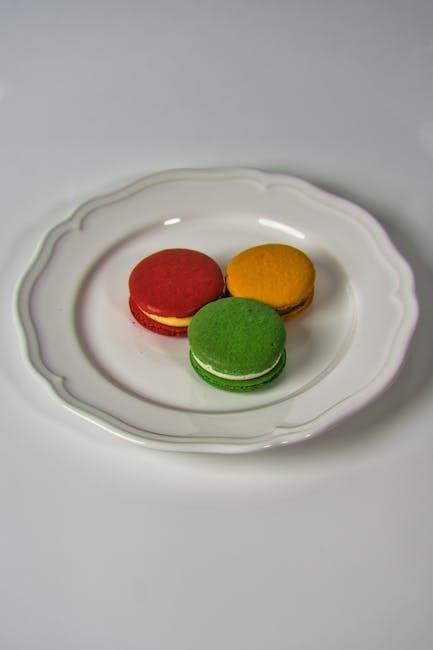
The Role of Science in Modernist Cuisine
Modernist Cuisine integrates scientific principles‚ transforming cooking into a precise‚ experimental art. The PDF version delves into chemistry and physics‚ offering insights into ingredient behavior and technique optimization.
5.1 The Chemistry of Cooking
The chemistry of cooking is central to Modernist Cuisine‚ as detailed in its PDF version. It explores chemical reactions‚ ingredient interactions‚ and molecular transformations‚ enabling precise control over culinary processes. Topics like the Maillard reaction‚ emulsification‚ and gelification are explained‚ providing a scientific foundation for innovative techniques. This understanding allows cooks to achieve desired textures and flavors‚ making the PDF a valuable resource for both professionals and home enthusiasts. The book’s scientific approach demystifies complex processes‚ ensuring accessibility and fostering creativity in the kitchen.
5.2 Physics in the Kitchen: Temperature‚ Pressure‚ and More
Modernist Cuisine delves into the physics of cooking‚ emphasizing the role of temperature and pressure in transforming ingredients. Techniques like sous vide and pressure cooking are explored‚ showcasing how precise temperature control and pressure manipulation achieve consistent results. The PDF version highlights tools such as vacuum sealers and pressure cookers‚ illustrating their impact on cooking processes. Understanding these physical principles allows chefs to innovate and replicate dishes with precision‚ making the PDF a vital resource for mastering modernist methods. This scientific approach ensures that cooking is both an art and a precise science.
5.3 The Biology of Ingredients: Understanding Flavor and Texture
Modernist Cuisine explores the biology of ingredients‚ revealing how their molecular structures influence flavor and texture. Proteins‚ fats‚ and starches behave predictably under specific conditions‚ enabling chefs to manipulate textures and enhance flavors. The PDF version details how biological processes‚ like enzymatic reactions‚ affect ingredients during cooking. By understanding these principles‚ cooks can optimize techniques for tenderizing meats‚ emulsifying sauces‚ and achieving ideal doneness. This biological insight empowers both home cooks and professionals to create dishes with precision and creativity‚ aligning science with culinary artistry.
Modernist Cuisine at Home
Modernist Cuisine at Home democratizes advanced culinary techniques‚ making them accessible to home cooks through a comprehensive PDF guide. It simplifies complex methods‚ enabling enthusiasts to experiment with innovative recipes and tools‚ bridging the gap between professional kitchens and home cooking with ease and creativity.
6.1 Adapting Professional Techniques for Home Cooks
Modernist Cuisine at Home simplifies complex professional techniques‚ making them accessible to home cooks. The PDF version provides step-by-step guides for methods like sous vide and spherification‚ allowing enthusiasts to achieve restaurant-quality results. Essential tools and simplified recipes ensure that home cooks can explore modernist cuisine without specialized equipment. This adaptation bridges the gap between professional kitchens and home environments‚ fostering creativity and innovation in everyday cooking.
6.2 Essential Tools for Modernist Cooking at Home
Modernist cooking at home requires specific tools to achieve professional results. Sous vide water baths‚ precision thermometers‚ and immersion blenders are indispensable. The PDF guide highlights these tools‚ ensuring home cooks can replicate techniques like foamification and gelification. While some equipment may be unconventional‚ they are now more accessible‚ enabling home enthusiasts to explore modernist cuisine creatively. These tools transform ordinary kitchens into experimental spaces‚ making innovative cooking achievable for all.
6.3 Simplified Recipes for Home Enthusiasts
The PDF version of Modernist Cuisine offers simplified recipes tailored for home cooks‚ making advanced techniques accessible. Over 200 recipes introduce methods like spherification and foamification‚ adapted for domestic kitchens. The guide demystifies complex processes‚ enabling enthusiasts to create innovative dishes without specialized equipment. By breaking down intricate steps‚ the book empowers home cooks to experiment confidently‚ blending science and creativity in everyday meals. This approach democratizes modernist cuisine‚ ensuring its principles are within reach of all culinary enthusiasts.
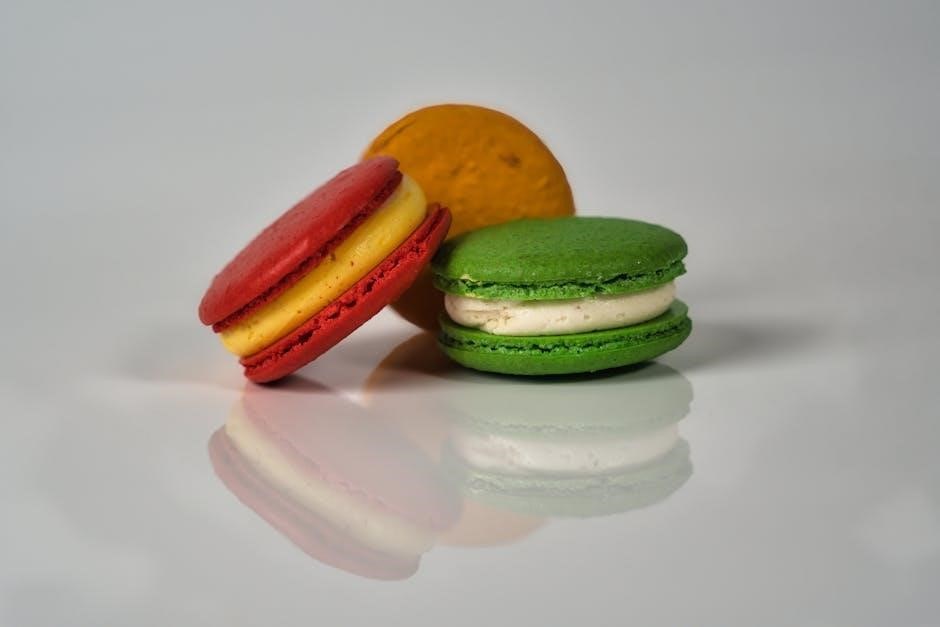
The Digital Revolution in Modernist Cuisine
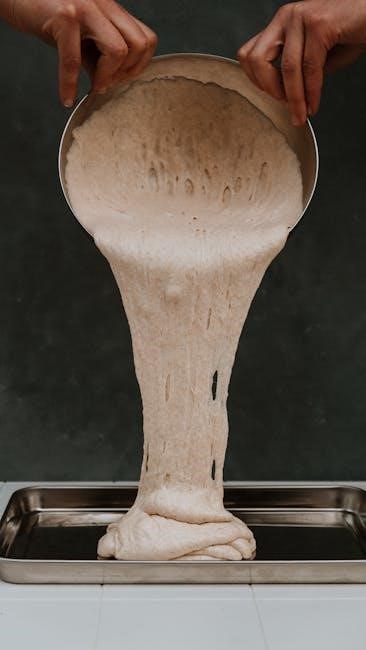
The PDF version of Modernist Cuisine introduces a digital shift‚ offering unparalleled accessibility and convenience for culinary enthusiasts. This format ensures that cutting-edge techniques and recipes are readily available‚ inspiring innovation in both professional and home kitchens. The digital revolution in culinary publishing is exemplified through this comprehensive resource‚ making modernist cuisine more approachable than ever before.
7.1 The PDF Version: Accessibility and Convenience
The PDF version of Modernist Cuisine represents a significant leap in culinary accessibility. Weighing in at 2400 pages‚ this digital format eliminates the need for physical storage‚ making it accessible to anyone with a device. Home cooks and professionals alike benefit from the ease of searching‚ bookmarking‚ and referencing specific techniques. Available on platforms like Amazon‚ the PDF ensures that Nathan Myhrvold’s groundbreaking work reaches a global audience‚ democratizing access to modernist techniques and fostering culinary innovation worldwide. This digital adaptation exemplifies the future of cookbook publishing.
7.2 Digital Resources and Supplements
The digital resources accompanying Modernist Cuisine enhance the learning experience for home cooks and professionals. Supplements include detailed technique videos‚ interactive guides‚ and downloadable templates. These resources provide step-by-step instructions for complex methods like sous vide and spherification. Regular updates ensure users access the latest innovations in culinary science. The digital format also allows for easy navigation‚ with hyperlinks and search functions making it simple to find specific techniques or ingredients. These tools empower cooks to explore modernist cuisine with confidence‚ bridging the gap between theory and practice.

7.3 The Future of Culinary Publishing
Modernist Cuisine sets a new standard for culinary publishing by embracing digital innovation. The PDF version and supplementary digital content showcase how cookbooks can evolve in the digital age. Interactive elements‚ such as video tutorials and searchable databases‚ redefine the reader experience. This approach not only enhances accessibility but also democratizes complex techniques. As publishing continues to shift‚ Modernist Cuisine serves as a blueprint for future cookbooks‚ blending tradition with cutting-edge technology to inspire a new generation of cooks and chefs.
The Photography of Modernist Cuisine
Nathan Myhrvold’s striking visuals elevate the book to a coffee-table masterpiece‚ capturing the artistry and science of modernist dishes with precision and creativity.
8.1 Nathan Myhrvold’s Contribution to Food Photography
Nathan Myhrvold’s photography in Modernist Cuisine is unparalleled‚ blending artistic vision with scientific precision. His images not only showcase dishes but also reveal the culinary processes behind them‚ making food photography a storytelling medium. Myhrvold’s work captures the transformative moments in cooking‚ from the sizzle of meat to the flow of sauces‚ offering a visual narrative that complements the book’s scientific approach. His photography has redefined how food is presented‚ turning each dish into a work of art that inspires both chefs and home cooks.
8.2 The Aesthetic and Artistic Value of Modernist Dishes
Modernist dishes are celebrated for their striking visual appeal‚ transforming food into edible art. The use of vibrant colors‚ geometric shapes‚ and innovative presentation creates a sensory experience that captivates the eye. Techniques like spherification and foamification allow chefs to craft dishes that are both visually intriguing and thought-provoking. The artistic value lies in the balance between creativity and precision‚ making each plate a masterpiece that challenges traditional notions of culinary presentation.
8.3 The Coffee Table Book: A Visual Masterpiece
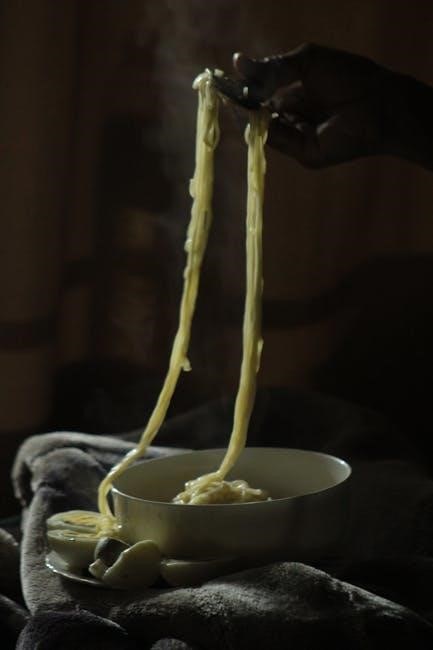
Modernist Cuisine is not just a cookbook but a stunning visual masterpiece‚ earning its place as a centerpiece on any coffee table. Nathan Myhrvold’s exceptional photography captures the artistry of modernist dishes‚ transforming them into visually captivating creations. The book’s high-quality images and meticulous attention to detail make it a feast for the eyes. Weighing 18 kg and spanning 2‚438 pages‚ it is a testament to culinary innovation and aesthetic brilliance‚ blending food‚ science‚ and art into a truly unparalleled publication.
Impact on the Culinary World
Modernist Cuisine has revolutionized the culinary world by introducing groundbreaking techniques and scientific approaches to cooking. It has inspired both professional chefs and home enthusiasts‚ democratizing modernist methods and setting a new standard for culinary innovation. The book’s influence is undeniable‚ making it a seminal work in the evolution of modern cooking.
9.1 Modernist Cuisine as a Seminal Work
Modernist Cuisine is widely regarded as a seminal work in the culinary world‚ revolutionizing how chefs and home cooks approach cooking. Its comprehensive‚ science-driven methodology has redefined traditional techniques‚ introducing innovative methods like sous vide and spherification. The book’s detailed exploration of culinary science has made it a benchmark for modern cooking‚ influencing top restaurants and home kitchens alike. Its PDF version has further democratized access‚ ensuring its groundbreaking ideas reach a global audience‚ solidifying its legacy as a transformative force in gastronomy.
9.2 Influence on Professional Chefs and Restaurants
Modernist Cuisine has profoundly impacted professional chefs and restaurants‚ inspiring a new wave of culinary innovation. Its techniques‚ such as sous vide and foamification‚ have become staples in high-end kitchens. Restaurants worldwide have adopted these methods‚ creating dishes that blend art and science. The book’s PDF version has made these techniques more accessible‚ allowing chefs to experiment and innovate. As a result‚ Modernist Cuisine has reshaped modern gastronomy‚ influencing menus and cooking practices across the globe‚ and earning acclaim as a revolutionary culinary resource.
9.3 Democratizing Modernist Techniques for Home Cooks
Modernist Cuisine has democratized cutting-edge culinary techniques‚ making them accessible to home cooks. The PDF version of the book simplifies complex methods‚ offering detailed guides for recreating restaurant-quality dishes at home. By providing affordable and easy-to-follow instructions‚ it empowers enthusiasts to experiment with modernist cooking without professional equipment.
This accessibility has sparked a wave of creativity in home kitchens‚ proving that modernist cuisine is not just for professionals. The book’s digital format ensures that innovative cooking is within reach for everyone‚ fostering a community of home cooks pushing culinary boundaries.
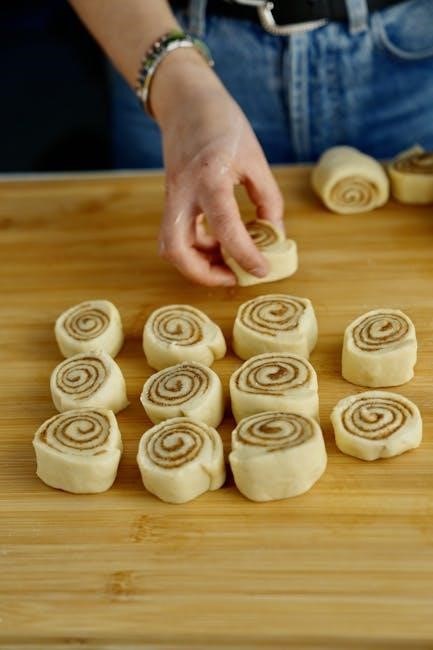
Controversies and Criticisms
The high cost of Modernist Cuisine at $455 and its complexity have sparked debates about accessibility. Critics argue it caters more to professionals than home cooks‚ despite the PDF version’s convenience.
10.1 The Cost and Accessibility of the Book
Modernist Cuisine’s hefty price tag of $455 has raised concerns about accessibility. While the PDF version offers convenience‚ the cost remains prohibitive for many‚ limiting its reach to hobbyists and professionals with substantial budgets.
10.2 The Practicality of Modernist Techniques
Some critics argue that modernist techniques‚ like sous vide and spherification‚ are impractical for home cooks due to the need for specialized equipment. While the PDF version simplifies access to recipes‚ the complexity of methods and cost of tools remain barriers‚ limiting their adoption beyond professional kitchens.
10.3 Ethical and Environmental Concerns
Modernist Cuisine raises ethical questions regarding ingredient sourcing and waste‚ particularly with exotic or unconventional materials. Environmental concerns include energy consumption from advanced techniques like sous vide and the carbon footprint of producing and shipping the heavy physical volumes. While the PDF version reduces environmental impact‚ the overall approach remains debated in terms of sustainability and accessibility for eco-conscious cooks.
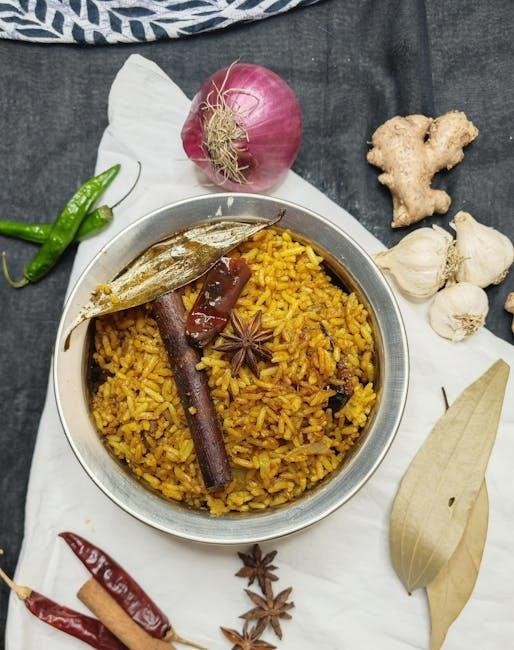
The Legacy of Modernist Cuisine
Modernist Cuisine has left a profound impact on the culinary world‚ inspiring innovation and redefining cooking techniques for both professionals and home enthusiasts‚ ensuring its enduring influence.
11.1 A New Era in Culinary Innovation
Modernist Cuisine ushered in a new era of culinary innovation by merging science and art. Its comprehensive approach‚ detailed in the PDF version‚ has democratized advanced techniques‚ making them accessible to home cooks and professionals alike. The book’s influence extends beyond kitchens‚ inspiring a global movement that continues to evolve‚ ensuring its relevance in shaping the future of cooking.
11.2 Inspiring Future Generations of Cooks
Modernist Cuisine has become a cornerstone for aspiring cooks‚ offering a deep understanding of culinary science. Its PDF version ensures accessibility‚ empowering home cooks and professionals alike. By bridging the gap between science and creativity‚ the book inspires experimentation and innovation‚ fostering a new wave of culinary enthusiasts who embrace modernist techniques and push the boundaries of traditional cooking.
11.3 The Enduring Relevance of the Book
Modernist Cuisine remains a seminal work in culinary arts‚ offering unparalleled depth and innovation. Its PDF version ensures accessibility‚ making it a lifelong resource for cooks. The book’s comprehensive coverage of techniques like sous vide and spherification continues to influence both professionals and home enthusiasts‚ solidifying its place as a foundation for modern culinary exploration.
With over 2‚400 pages across six volumes‚ it provides a detailed understanding of cooking science‚ ensuring its relevance for years to come. Its impact is undeniable‚ shaping the future of gastronomy.
